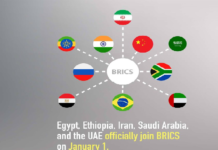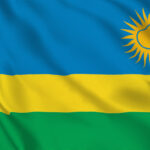From learned legal debates on what defines ‘significant harm’, to allegations about mediators-turned-arm-twisters; the benign, but naïvely optimistic, talk of carrying on in the spirit of the stalled Cooperative Framework Agreement, to the pragmatic appeal of the 2015 Declaration of Principles, there are abundant choices to provoke a heated discussion about the Grand Ethiopian Renaissance Dam (GERD).
Notwithstanding, given what would be at stake in the event of a prolonged Nile crisis, this article focuses on the following three aspects:
- The privileges the GERD affords Ethiopia to provide for its riparian brethren;
- The numbers posing problems; namely, the releases expected from GERD during drought and dry spells;
- And, geopolitically more important, why Ethiopia opposes a legally binding agreement, including the resolution of disputes by arbitration.
In the last section, I will focus on the methods chosen for dispute resolution, and highlight why Ethiopia is justified in refusing to lay the GERD—this pride of its people—at the mercy of a global order where might equals right.
But let me get over with the part that may be the most annoying to the hawks among my countrymen.
The privilege to provide
I will be matter of fact: Sudan and Egypt need the GERD’s water—and there will be a lot of it—more than we do. Please do not read ‘Abay’ in place of ‘GERD’. This statement is not about water rights. It is about how to collaboratively use the GERD, a dam that impounds, at full capacity, an amount of water that is almost twice the average annual flow of the Blue Nile shortly before Abay crosses the border into Sudan.
The GERD reservoir’s capacity is 74 billion cubic meters (BCM) at a height of 640 meters above sea level (MASL). The initial filling target is 49 BCM at 625 MASL at the end of the dry season and the beginning of the wet season in any given year; the first being 2025, if all goes to plan and the Rain Gods behave, for everyone’s sake.
The reservoir will fill to the brim during the ensuing kiremt, and at least 25 billion cubic meters, drawing down from brim to 625 MASL, will then be released at a schedule of Ethiopia’s choosing throughout the year, to make room for flood routing, to simultaneously both generate electricity and meet Sudan and Egypt’s (somewhat legitimate) water needs.
There is practically no irrigable land along this 20-kilometer stretch before the Sudanese border. Ethiopia has no plan to use the GERD for irrigation; well, not for herself, at least. Water used for electricity will result in a regulated downstream flow that will enable whoever is in-between the Mediterranean and our Grand Dam to use it for their crops. With flood plains on the Nile banks and several dams across the river, Sudan has plenty of such advantages. Egypt, too, has the High Aswan Dam (HAD), Lake Nasser, and seven other barrages placed along a 1,200 km stretch of the Nile, feeding over 13,000 kilometers of canals, through which it can gain a similar advantage.
The two countries depend on the Nile for navigation, electricity and, more critically, for municipal use, including drinking water. The GERD is also supposed to protect settlements along the Nile’s path from extreme floods and excessive silt during wet months. In addition to a regulated year-round flow, the GERD is located in a less arid climate than HAD and has less surface area per reservoir volume, which reduces evaporation and leaves more water for downstream use during the year. No matter how large their dead storages are, sooner or later silt eroded from the Ethiopian highlands will fill up Sudanese and Egyptian Nile dams. The GERD will delay that calamity, which for the HAD may otherwise have happened around 2150, by about 60 years.
But to be fair to the environment, a dam GERD’s size is likely to be a hostile intrusion on any robust riverine ecosystem—let alone on one as distressed as the Easter Nile’s. Even the seemingly simple issue of trapping silt has the potential to impoverish downstream wetlands; with less silt, the river’s water is likely to be more torrential and erosive to the fragile fluvial ecosystems. The debate whether Sudanese farmers are better off pumping up a regulated dry season flow than depending on seasonal recession floods also still rages.
Source: Ethiopia Insight














